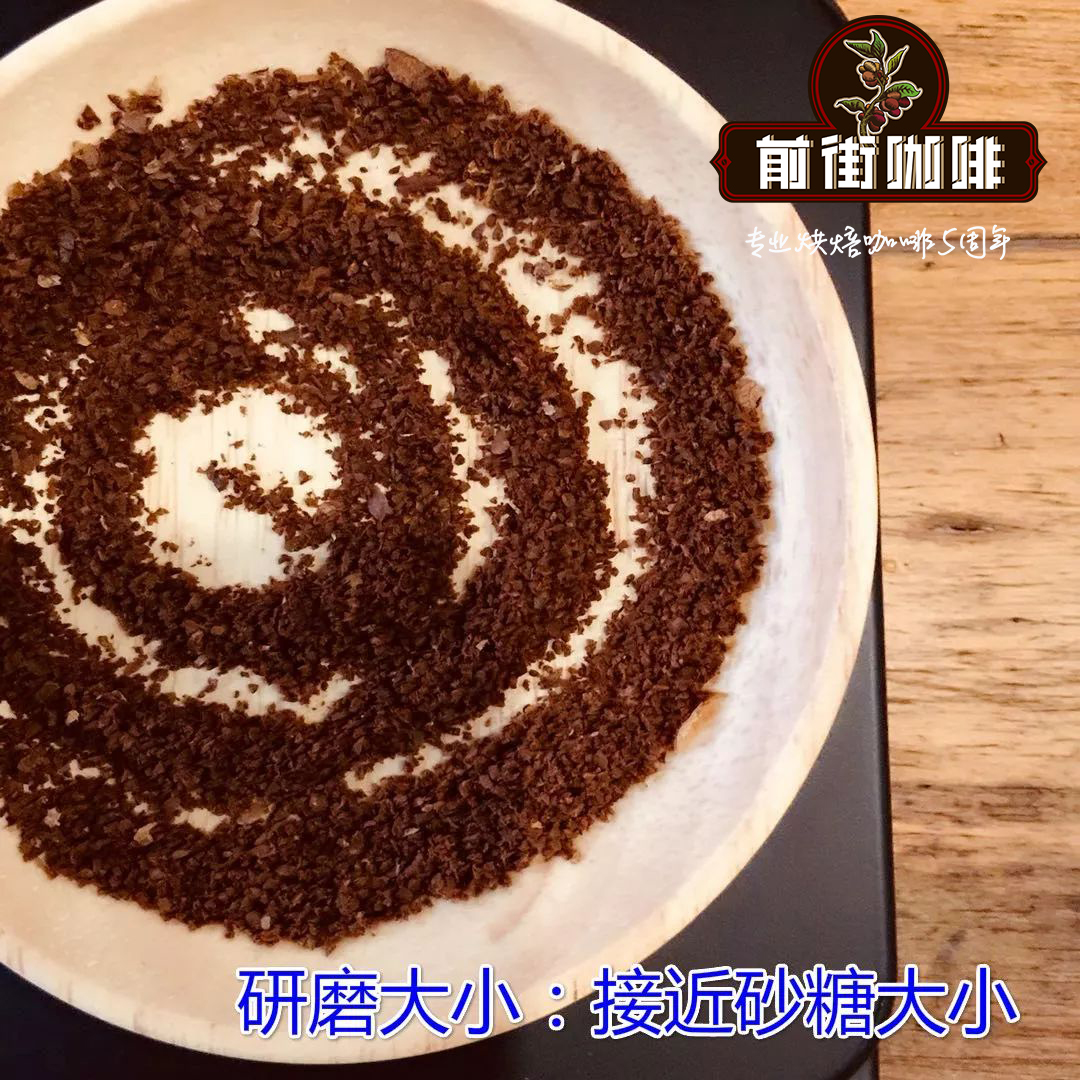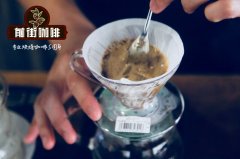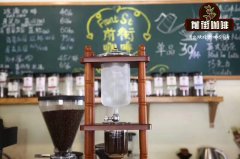What is the effect of the thickness of hand-brewed coffee powder on coffee extraction?
The coffee grinding thickness is closely related to the final taste of coffee. A professional barista must know the effect of coffee powder grinding thickness on coffee extraction before making coffee, and reasonably control the coffee product quality by adjusting the coffee grinding thickness.
When you use a machine that takes less time to brew, the coffee powder must expand more surface area to come into contact with water, and the finer the particles are needed; conversely, the longer the cooking time, the rougher the grinding particles must be. To put it simply, the longer the extraction time, the thicker the coffee beans will be ground, so as not to cause excessive extraction and let the bitter taste of the coffee run out; the shorter the extraction time, the finer the coffee beans will be ground, so as to avoid insufficient extraction.
The thickness affects the extraction rate
Ripe beans must be ground and crushed to open the hard textured cell walls and allow hot water to enter and extract the fragrance.
The thickness should be proportional to the extraction time.
Under normal circumstances, the fineness of coffee is inversely proportional to the extraction time and the extraction rate. It can be proved from hand brewing and espresso that the coarser the powder is, the smaller the extraction resistance is, the greater the flow rate is, the shorter the extraction time is, the lower the extraction rate is, and the lighter the taste is.
On the contrary, the finer the powder is ground, the greater the extraction resistance is, the smaller the flow rate is, and the longer the extraction time is, the higher the extraction rate is and the stronger the flavor is.
However, professional baristas will go against the trend and try to shorten the extraction time slightly when they encounter finer coffee powder, so as to avoid making bitter coffee with too high extraction rate. On the contrary, if you encounter coarser coffee powder, you will try to prolong the extraction time slightly, so as to avoid insufficient extraction and make insipid coffee.
In order to make delicious coffee, the fineness of grinding should be proportional to the extraction time, and it is more likely to produce a charming flavor spectrum.
Deep baked beans are slightly thicker, shallow baked beans are slightly thinner.
In addition, before deciding on the grinding degree of coffee beans, baristas will first look at the color and oil production of cooked beans. The lighter the roasted coffee, the more complete and hard the texture is, and the more difficult it is to extract. It is appropriate to grind slightly, but not too fine, so as not to highlight the sharp and sour taste. The deeper the roasting degree of coffee, the deeper the damage to the texture, the easier to extract, it is appropriate to pick a little rough grinding, deep roasting grinding too fine will be bitter. Therefore, the degree of grinding of deep-roasted coffee is generally thicker than that of shallow roasted beans.
The thickness can control the bitterness
Roughness is a good way to control bitterness, because the finer the grinding, the higher the extraction rate, the easier it is to extract high molecular weight bitter substances such as chlorogenic acid, quinic acid, caffeine and carbides. On the contrary, if the grinding is too rough, the lower the extraction rate is, the more difficult it is to extract the astringent bitter substance with high molecular weight, but the sweet taste with middle molecular weight may remain in the coffee grounds because of insufficient extraction, which is a waste. Therefore, baristas should pay attention to whether the thickness of the powder is normal every day. Too thick or too fine will cause abnormal extraction and affect the flavor of coffee.
Generally speaking, the way coffee is brewed is to determine the particle size of the coffee powder. When you use a machine that takes less time to brew, the coffee powder must expand more surface area to come into contact with water, and the finer the particles are needed; on the contrary, when the brewing time is longer, the grinding particles must be bigger and rougher. To put it simply, the longer the extraction time, the thicker the coffee beans will be ground, so as not to cause excessive extraction and let the bitter taste of the coffee run out; the shorter the extraction time, the finer the coffee beans will be ground, so as to avoid insufficient extraction.
Mastering the roughness and fineness of coffee beans is also important for coffee, which directly affects the extraction effect (golden cup principle), that is, the flavor of coffee.
At the same brewing time: the finer the coffee powder, the stronger the coffee taste; the thicker the coffee powder, the lighter the taste. The longer the extraction time, the thicker the beans will be ground, so as to avoid excessive extraction and bitterness. The shorter the extraction time, the finer the beans will be ground to avoid insufficient extraction.
In terms of taste, if you think the coffee you drink is often bitter, you might want to try it a little thicker.
In terms of the roasting degree of coffee beans, shallow roasted beans can be refined to increase richness, while deep roasted beans can be thickened to avoid over-extraction.
Fineness grinding: flour black sugar powder
Medium grinding: fine sugar
Roughness grinding: coarse sugar
Then list the suitable grinding of the equipment.
1. Italian machine: fineness / medium fineness
two。 Mocha pot: medium / medium
3. Siphon pot / hand punch: medium / medium thick
4. Filter pressure: medium / coarse
As a matter of fact, there are no certain criteria for the thickness, which is related to the baking degree / coffee bean species. It is just a list for your reference. For more professional coffee exchanges, please scan the code and follow Wechat: thinkingcapacity

Important Notice :
前街咖啡 FrontStreet Coffee has moved to new addredd:
FrontStreet Coffee Address: 315,Donghua East Road,GuangZhou
Tel:020 38364473
- Prev

The adjustment of hand steaming, what do you need to pay attention to?
Professional coffee knowledge exchange more coffee bean information Please pay attention to the coffee workshop (Wechat official account cafe_style) in the process of learning hand flushing, in addition to knowing the conventional round water injection method and cut off water method, the most commonly asked term is "steaming" and put forward all kinds of strange theories. I think it is necessary to write an explanation about it to explain one or two. First, we...
- Next

What is ice drop coffee? What are the taste characteristics of ice drop cold coffee?
Professional coffee knowledge exchange more coffee bean information Please pay attention to the coffee workshop (Wechat official account cafe_style) Water drop coffee originated in Europe, through the natural infiltration of water pressure, adjust the speed of water droplets, slowly filtered with cold water, with 5 C low temperature extraction chain for 10 hours for a long time, let the original coffee flavor fax
Related
- Beginners will see the "Coffee pull flower" guide!
- What is the difference between ice blog purified milk and ordinary milk coffee?
- Why is the Philippines the largest producer of crops in Liberia?
- For coffee extraction, should the fine powder be retained?
- How does extracted espresso fill pressed powder? How much strength does it take to press the powder?
- How to make jasmine cold extract coffee? Is the jasmine + latte good?
- Will this little toy really make the coffee taste better? How does Lily Drip affect coffee extraction?
- Will the action of slapping the filter cup also affect coffee extraction?
- What's the difference between powder-to-water ratio and powder-to-liquid ratio?
- What is the Ethiopian local species? What does it have to do with Heirloom native species?

